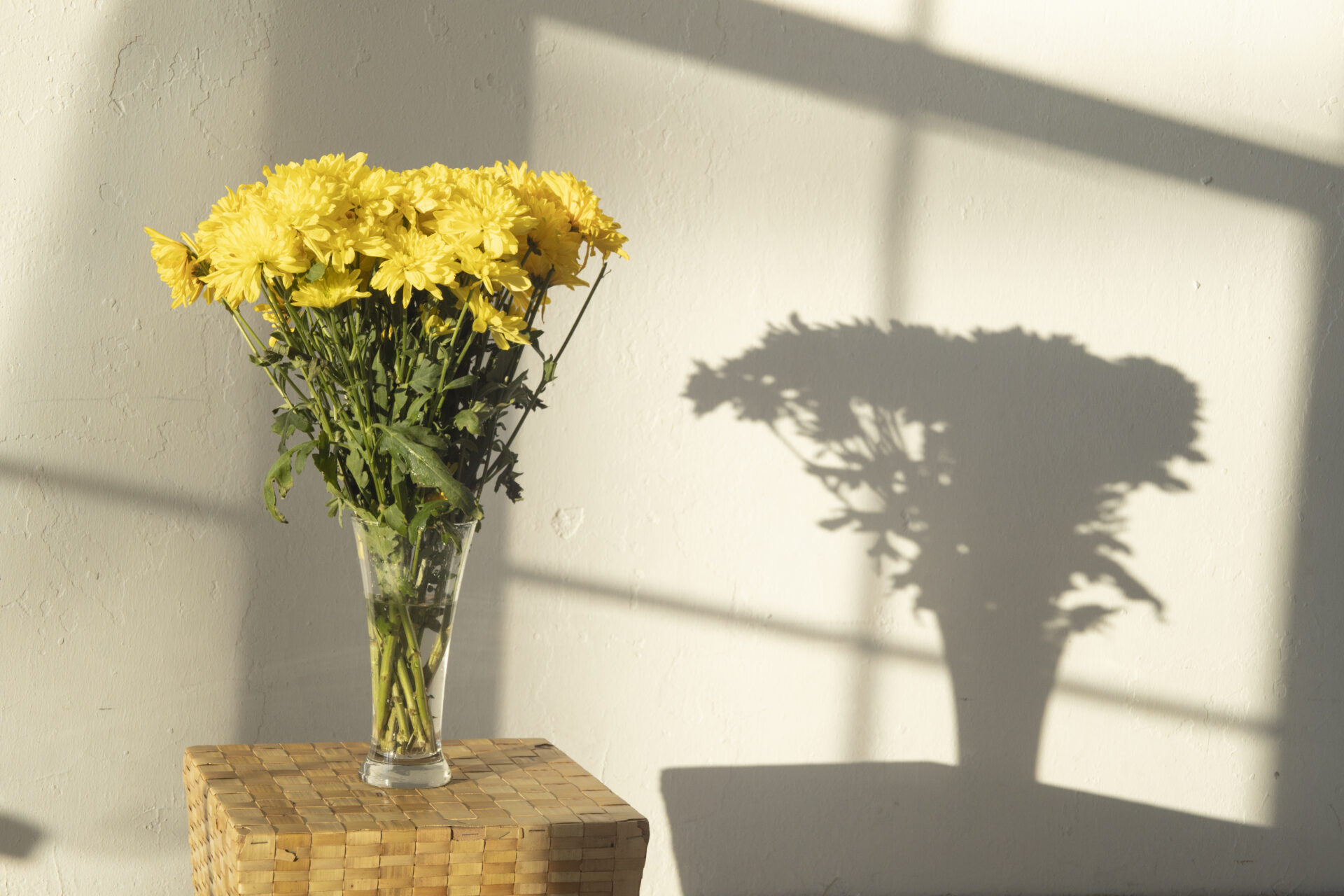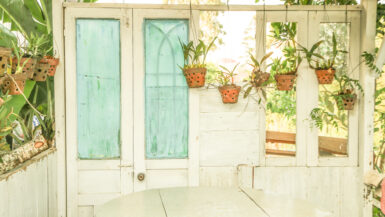Welcome to our latest article, where we delve into the fascinating world of Kitchen Indoor Vertical Garden Ideas. As urban living spaces become increasingly limited, finding innovative solutions to incorporate greenery in our homes for aesthetic purposes and its numerous health and environmental benefits is essential.
In this article, we will explore the core concepts of indoor vertical gardening, focusing on its practical applications in the kitchen. From selecting the right plants to designing a functional and visually appealing garden layout, we aim to provide you with the knowledge and inspiration to transform your kitchen into a thriving, eco-friendly oasis.
So, without further ado, let’s embark on this exciting journey towards creating a healthier, greener living space.
Indoor Plant Shelves for Edibles
As you embark on your vertical gardening journey, you might be wondering how to maximize the functionality of your kitchen space while incorporating a beautiful plant display. One highly effective solution is to create indoor plant shelves for edibles.
This approach adds a splash of green to your kitchen and gives you a fresh supply of herbs, vegetables, and fruits at your fingertips. This section will explore various indoor vertical garden ideas for designing and utilizing indoor plant shelves in your kitchen, ensuring a harmonious blend of practicality and aesthetics.
Choosing the Right Edible Plants
Before you start designing your indoor plant shelves, it’s essential to select the appropriate edible plants that can thrive in your kitchen’s unique conditions. Some popular options include herbs like basil, mint, and parsley, leafy greens like spinach and kale, and compact fruiting plants like cherry tomatoes and strawberries.
When choosing your plants, consider their light and humidity requirements and compatibility with your kitchen’s conditions.
Designing Your Plant Shelves
Now that you have selected your edible plants, it’s time to design your indoor plant shelves. Numerous styles and materials exist, including wooden ladder shelves, metal grid shelves, or even repurposed furniture pieces.
Your choice will depend on your taste and the overall design of your kitchen. Don’t be afraid to get creative and experiment with different layouts, resulting in a unique and visually appealing vertical garden.
For more inspiration on vertical garden design, check out our article on The Role of Indoor Vertical Gardens in Modern Architecture.
Maximizing Space and Functionality
To make the most out of your indoor plant shelves, consider incorporating additional features that enhance their functionality. For instance, you could add hooks or rods to hang utensils and kitchen tools or include small containers for storing seeds, plant markers, or gardening supplies. Combining your vertical garden with your kitchen storage needs creates a more organized and efficient workspace.
Maintenance and Care
Lastly, it’s essential to keep your edible plants healthy and thriving. Regular watering, pruning, and fertilization ensure a bountiful harvest. Monitoring your plants for pests and diseases will help you maintain a vibrant, productive indoor garden. With proper care and attention, your indoor plant shelves will serve as a beautiful design element and contribute to a healthier, more sustainable lifestyle.
As you can see, indoor plant shelves for edibles are a fantastic way to incorporate a vertical garden into your kitchen space. By carefully selecting the right plants, designing an attractive layout, and providing proper care, you can enjoy the numerous benefits of having fresh, homegrown produce at your fingertips.
Space-Saving Kitchen Herb Gardens
Incorporating a kitchen herb garden into your indoor vertical gardening plan is a brilliant way to save space while providing fresh, aromatic, flavorful herbs at your fingertips. In this section, we will explore various space-saving kitchen herb garden ideas that are both functional and visually appealing.
With creativity and proper planning, you can transform your kitchen into a fragrant, green oasis without sacrificing any valuable counter or floor space.
Wall-Mounted Herb Gardens
One effective way to save space in your kitchen is to utilize your walls for growing herbs. Wall-mounted herb gardens not only add an attractive visual element to your kitchen but also keep your herbs easily accessible for use in your favorite recipes. Use hanging planters, magnetic pots, or even repurposed wooden pallets to create a stylish, space-efficient vertical garden.
Window Sill Herb Planters
Another excellent option for a space-saving herb garden is to use your kitchen window sill. Placing small pots or planters on the window sill allows you to create a compact herb garden that benefits from natural sunlight while staying out of your daily kitchen activities. Choose to complement pots or planters to match your kitchen decor and add an extra personality to your indoor herb garden.
Under-Cabinet Herb Gardens
For a truly innovative and space-saving solution, consider an under-cabinet herb garden. These systems often use hanging containers or slim, horizontal planters to grow herbs beneath your kitchen cabinets. This clever design allows you to enjoy the benefits of an indoor herb garden without occupying any counter space. Be sure to select herbs with similar light and moisture requirements to ensure they thrive in this unique environment.
Rolling Cart Herb Gardens
A rolling cart herb garden might be the perfect solution if you’re looking for a portable and versatile option. By repurposing a rolling kitchen cart or trolley, you can create a movable herb garden that can be easily relocated to different kitchen areas, depending on your needs. This flexibility allows you to optimize your herbs’ exposure to sunlight and air circulation, ensuring they remain healthy and vibrant.
As we have explored, numerous creative and space-saving solutions exist for incorporating an herb garden into your kitchen’s vertical gardening plan. You can enjoy fresh, flavorful herbs at your fingertips by selecting the right plants and designing a garden layout that suits your unique needs and preferences.
Whether you choose a wall-mounted, window sill, under-cabinet, or rolling cart herb garden, the result will be a fragrant, green addition to your kitchen that enhances your culinary experiences and overall well-being.
Hydroponic Systems in Kitchen Spaces
As we continue to explore indoor vertical garden ideas for the kitchen space, it’s worth considering the integration of hydroponic systems. Hydroponic gardening is an innovative method of growing plants without soil, using nutrient-rich water to deliver essential nutrients directly to the roots.
This approach offers numerous benefits, including increased growth rates, reduced water usage, and elimination of soil-borne pests and diseases. This section will delve into kitchen indoor vertical garden ideas and the exciting world of hydroponics and discuss various ways to incorporate this advanced gardening technique into your kitchen space.
Understanding Hydroponic Systems
Hydroponic systems come in various forms, each with unique advantages and challenges. Some common types include nutrient film technique (NFT), aeroponics, ebb and flow, and deep water culture. These systems can be tailored to fit your kitchen space and requirements, allowing for a highly customizable and efficient indoor garden.
When deciding on the best hydroponic system for your kitchen, you must consider available space, desired plant types, and the maintenance you’re willing to invest.
Creating a Stylish and Practical Hydroponic Kitchen Garden
Designing a visually appealing hydroponic garden that complements your kitchen decor is crucial for a seamless integration. You can choose from various designs, such as wall-mounted systems, countertop gardens, or hanging hydroponic installations.
When selecting the right design, consider your kitchen’s color scheme, materials, and overall aesthetic. By thoughtfully incorporating the hydroponic system into your kitchen environment, you can create a visually striking and productive garden space.
Grow Your Own Fresh Produce Year-Round
One of the most significant advantages of hydroponic systems is the ability to grow fresh produce year-round, regardless of outdoor weather conditions. This means you can enjoy a continuous supply of fresh herbs, leafy greens, and even some tiny fruiting plants in your kitchen. By carefully selecting plants with similar nutrient and environmental requirements, you can maintain a thriving hydroponic garden that nourishes you and your family all year.
Maintaining a Healthy Hydroponic Kitchen Garden
While hydroponic systems often require less maintenance than traditional soil-based gardens, monitoring and maintaining your plants’ health is essential. This includes regularly checking nutrient levels in the water, ensuring adequate lighting and air circulation, and looking for any signs of pests or diseases. With proper care, your hydroponic kitchen garden will flourish, providing you with a fresh and sustainable produce source.
As we have discovered, incorporating a hydroponic system into your kitchen space offers numerous benefits, from efficient use of space to the year-round availability of fresh produce. By understanding the various types of hydroponic systems and thoughtfully designing a garden that complements your kitchen, you can enjoy the many advantages of this innovative gardening technique.
Your hydroponic kitchen garden will add a touch of greenery and life to your home and contribute to a healthier and more sustainable lifestyle.
DIY Vertical Garden Wall Ideas
Transforming your kitchen space into a lush, green oasis doesn’t have to be expensive or complicated. With ingenuity and basic materials, you can create a stunning DIY vertical garden wall that adds life, color, and personality to your home.
This section will explore various DIY vertical garden wall ideas that are visually appealing and easy to create and maintain. Whether you’re an experienced gardener or a beginner looking to start your first indoor garden, these ideas will inspire and delight you.
Upcycled Pallet Garden Wall
One popular DIY vertical garden wall idea is to upcycle wooden pallets into a functional and attractive garden structure. Secure the pallet to your kitchen wall, add a layer of landscape fabric to hold the soil, and fill it with your favorite herbs, greens, or decorative plants. This rustic, eco-friendly option is not only budget-friendly but also adds a touch of charm and character to your kitchen space.
Mason Jar Herb Garden
Consider creating a mason jar herb garden for a more minimalistic and modern look. Attach a series of mason jars to a wooden board or directly to your kitchen wall, fill them with soil and your chosen herbs, and enjoy the fresh, fragrant display. This simple yet elegant design is perfect for small spaces and adds a touch of sophistication to your kitchen decor.
Vertical Gutter Garden
Another innovative DIY vertical garden wall idea is repurposing old gutters into planters. By attaching sections of guttering to your kitchen wall, you can create a unique and functional garden that takes up minimal space. This versatile option allows you to grow various plants, from herbs and leafy greens to small fruiting plants and decorative flowers.
Framed Living Wall Art
If you want to make a bold statement in your kitchen, consider creating a framed living wall art piece. Construct a wooden frame, fill it with soil and various small plants, and hang it on your wall like a piece of art. This stunning, eye-catching design adds an element of sophistication and luxury to your kitchen space while providing the benefits of a thriving indoor garden.
Shoe Organizer Vertical Garden
Repurposing an over-the-door shoe organizer is a creative and cost-effective option for those seeking a unique and unconventional DIY vertical garden wall. Fill the shoe pockets with soil, plant your desired herbs or greens, and hang the organizer on your kitchen wall. This quirky design saves space and serves as a conversation starter, showcasing your innovative approach to indoor gardening.
These DIY vertical garden wall ideas demonstrate that creating a beautiful and functional indoor garden in your kitchen space doesn’t have to be complicated or expensive. By repurposing everyday items and using creativity, you can design a stunning garden wall that complements your kitchen decor and enhances your overall well-being.
Whether you choose an upcycled pallet, mason jar herb garden, vertical gutter garden, framed living wall art, or a shoe organizer garden, you’ll be well on your way to enjoying the countless benefits of indoor vertical gardening.
Hanging Planters for Fresh Greens
Elevate your indoor vertical garden to new heights by incorporating hanging planters for fresh greens into your kitchen space. This versatile and attractive solution allows you to grow various leafy greens and herbs, adding a touch of nature and freshness to your home while maximizing your available space.
This section will explore multiple kitchen indoor vertical garden ideas about hanging planters and provide tips for selecting and maintaining your plants, ensuring a thriving and visually appealing vertical garden in your kitchen.
Choosing the Perfect Hanging Planter
Many hanging planter options suit any kitchen style or personal preference. From classic woven baskets and ceramic pots to modern geometric planters and minimalist macrame hangers, there is a design for everyone. When selecting your hanging planter, consider factors such as the weight capacity of your ceiling or wall mounts, the size and growth habit of your chosen plants, and the overall aesthetic of your kitchen.
Selecting the Right Greens for Your Hanging Garden
To create a successful hanging garden, selecting the appropriate plants that will thrive in your kitchen’s unique conditions is crucial. Leafy greens like lettuce, spinach, and arugula are ideal for hanging planters due to their shallow root systems and compact growth habits.
Herbs such as parsley, cilantro, and chives also make excellent choices, providing fresh flavor to your culinary creations. When choosing your plants, consider light requirements, humidity levels, and compatibility with your selected hanging planter.
Arranging Your Hanging Planters for Maximum Impact
The arrangement of your hanging planters can significantly impact your vertical garden’s overall appearance and functionality. Consider staggering your planters at different heights and clustering them together for a lush, entire appearance or creating a unique pattern to add visual interest to your kitchen space.
Ensure each plant receives adequate light and air circulation by providing enough space between planters and avoiding overcrowding.
Caring for Your Hanging Plants
Proper care and maintenance are essential for keeping your hanging greens healthy and vibrant. Regular watering is crucial, but be mindful of each plant’s needs to avoid over or under-watering. Additionally, providing appropriate nutrients through fertilization will help ensure a bountiful harvest. Pruning and trimming your plants will maintain an attractive appearance, encourage healthy growth, and prevent disease.
By selecting the right hanging planters, plants, and arrangements, you can create a stunning and functional vertical garden in your kitchen. With proper care and attention, your hanging greens will continue flourishing, providing a beautiful, natural addition to your home and a fresh source of nutritious greens for your culinary creations.
Conclusion
A vertical garden can make a great addition to your kitchen. You can buy a shop-bought garden or make one yourself. We hope you have found ideas to create the perfect green area for your kitchen. You need to plan what you want and go for it. An indoor vertical garden in your kitchen is a great place to grow herbs and spices. It saves space if you do not have much space in your home. Just make sure that you maintain your garden for the best produce.







Leave a reply